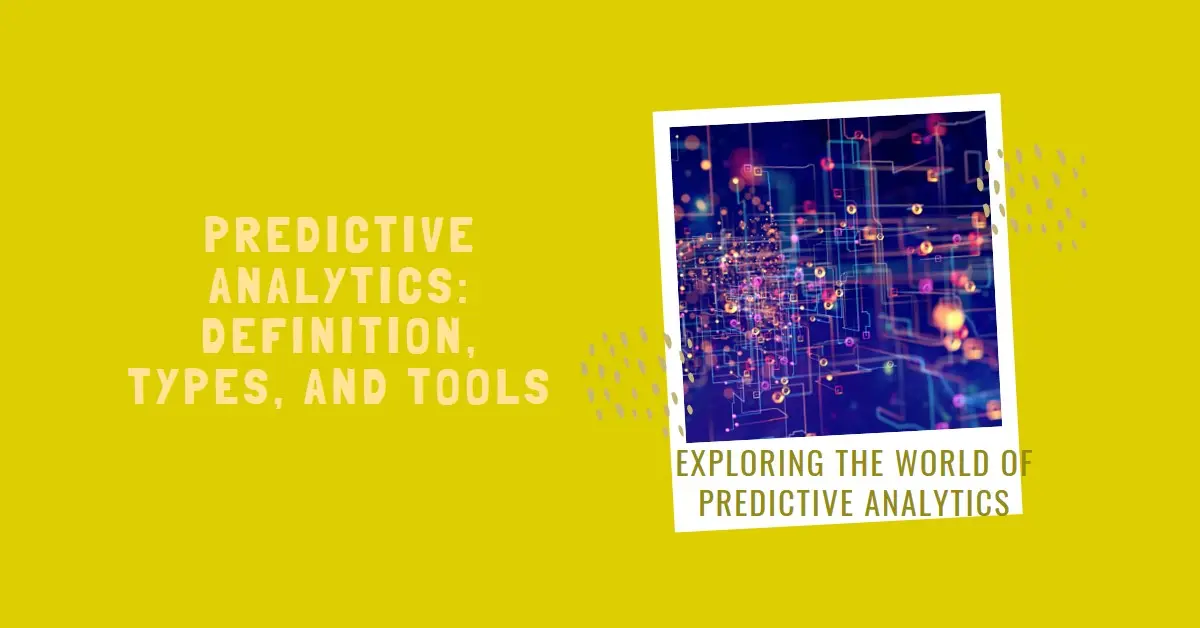Introduction
In today’s data-driven world, it helps companies make smart choices before things happen. This article explores different types of predictive analytics and tools like Python and Microsoft Azure, making it easy for businesses in healthcare, finance, and more to stay ahead. We delve into the intricacies of predictive analytics, empowering businesses to make savvy decisions and thrive in today’s dynamic data-driven landscape.
Understanding Predictive Analytics
Predictive analytics is like a smart tool that uses past data and fancy math to guess what might happen in the future. Predictive analytics assists businesses in making informed decisions before events occur, rather than merely analyzing past occurrences. This tool proves valuable in various domains, such as forecasting sickness outbreaks, anticipating stock market trends, and identifying potential customers.
Types of Predictive Analytics
Predictive Data Analytics is a big group of tools that use old data to guess what might happen in the future. Here are some common subtypes of predictive data analytics:
- Classification Analysis: Classification analysis is like sorting things into groups. For example, it can help decide if an email is spam, if a customer is important, or if a product is broken.
- Regression Analysis: Regression analysis is a tool that guesses numbers by looking at old data and it helps figure out how things like ads, seasons, and prices affect stuff, like predicting how much money sales will make.
- Time Series Analysis: Time series analysis looks at data collected over time and helps guess what might happen next based on what happened before. It’s used in finance to predict stock prices and by weather forecasters to figure out what the weather will be like.
- Anomaly Detection: Anomaly detection is like a superhero for finding weird things in data and it is important for catching fraud, keeping computer networks safe, and making sure products at good quality.
- Natural Language Processing (NLP) for Text Analysis: In the world of words, NLP (Natural Language Processing) helps figure out what people are saying in things like reviews, social media, or news and it is like a smart tool for understanding.
- Machine Learning: Machine learning is a strong tool in predictive analytics that uses smart algorithms to learn from data and get better at making predictions. Deep learning, a part of machine learning, is good at recognizing images and understanding language.
Predictive Data Analytics Tools
To use predictive analytics well, organizations need special tools and software. Here are some popular predictive data analytics tools that are widely used across industries:
- Python: Python is a top choice for working with data and making smart predictions and it is helpful tools like Scikit-Learn, TensorFlow, and Keras that make it easy to create predictive models.
- R: R is a special programming language made for studying numbers and showing data visually. People who work with numbers a lot, like statisticians and data scientists, really like it because it helps them make predictions with its useful packages.
- SAS: SAS, which stands for Statistical Analysis System, is a big software package with tools for studying data and making predictions. Persons in healthcare, finance, and government like using it because it’s easy to use.
- IBM SPSS: IBM SPSS is a strong tool for working with numbers and making predictions. People in the field of research like it because it is easy to use and has helpful features for studying data.
- RapidMiner: RapidMiner is like a smart toolbox for data science, with tools for getting data ready, making machines learn, and predicting things. It’s popular because it makes it easy to build prediction models using a visual way of working.
- Microsoft Azure Machine Learning: Microsoft Azure Machine Learning is like a digital space where companies can create, teach, and use lots of smart models for machine learning.
Conclusion
In conclusion, predictive analytics is like a helpful tool for businesses in today’s data-driven world. It uses past data and smart math to make predictions about what will be going to happen next. There are different types of predictive analytics, and tools like Python, R, SAS, IBM SPSS, RapidMiner, and Microsoft Azure Machine Learning make it easier for businesses to use these predictions. As the technology improves, predictive analytics helps businesses make smart decisions based on data, keeping them competitive and successful in the world.



